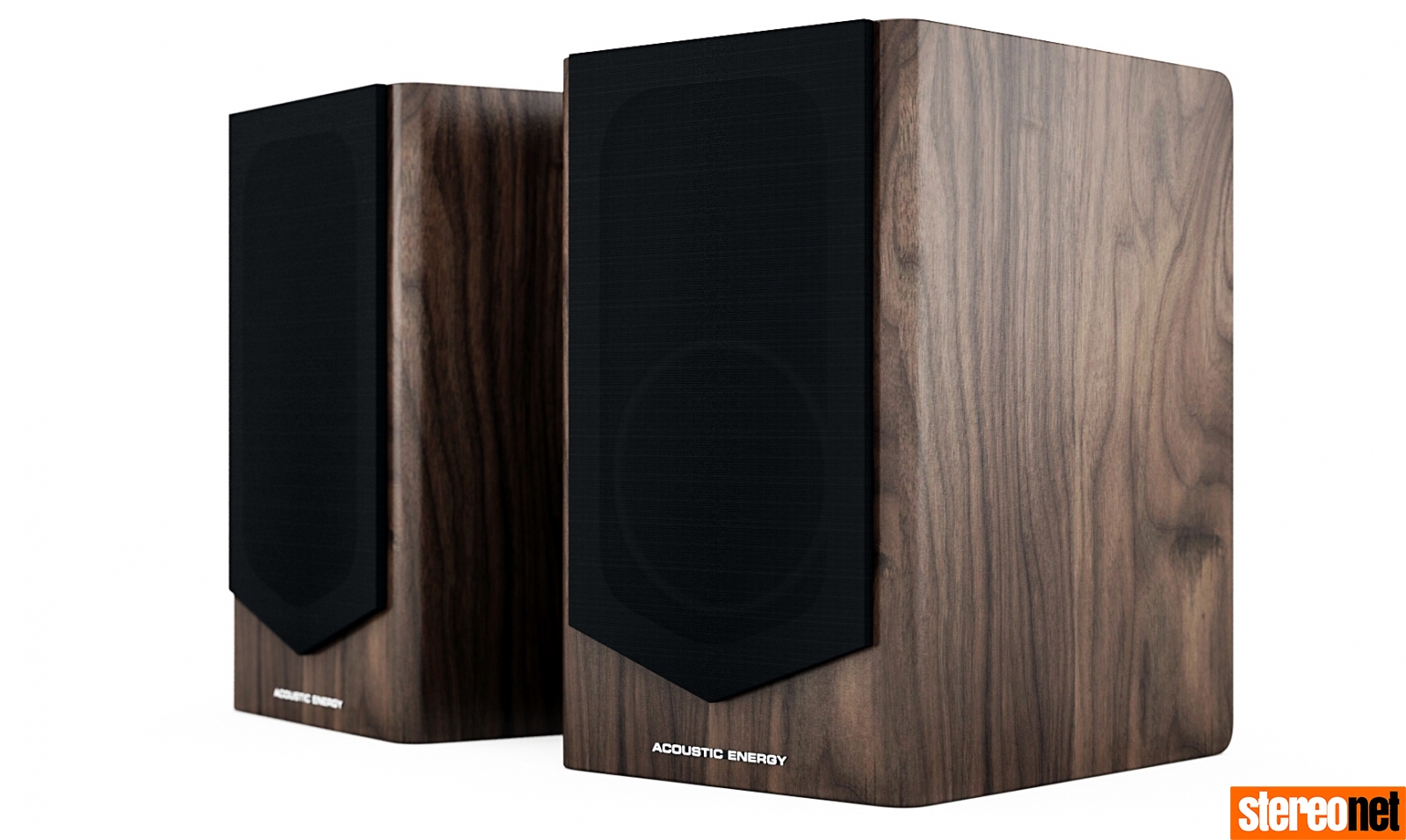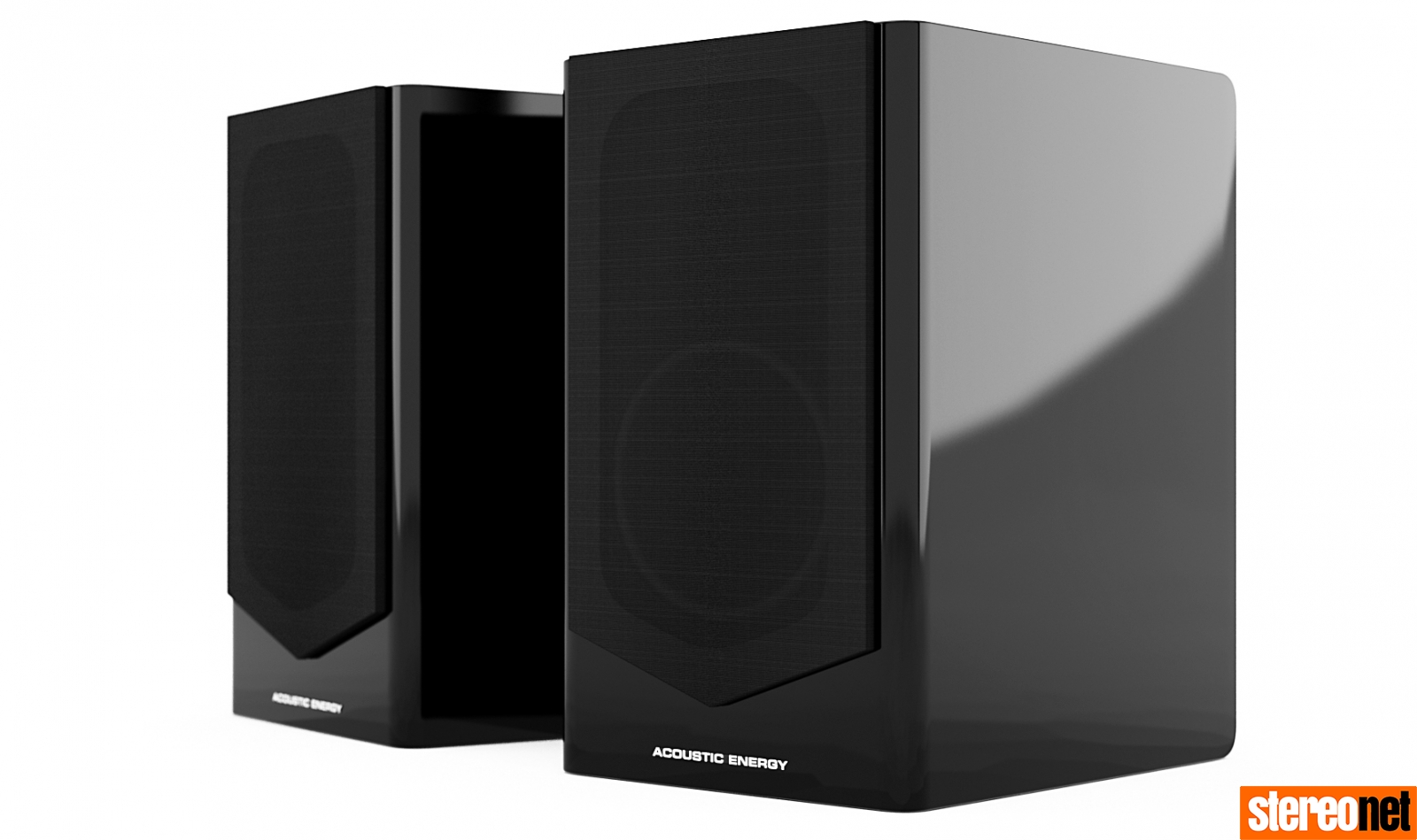Acoustic Energy AE500 Stand-Mount Loudspeaker Review

David Price takes a close look at the smaller of the two loudspeaker models that make up Acoustic Energy's flagship 500 Series, the compact AE500 stand mount.
Acoustic Energy
AE500 Stand Mount
AUD $2,050 RRP

Since its inception back in 1987, Acoustic Energy’s stock-in-trade has – in effect – been getting better results than you would expect from small speakers. Of course, it’s done well with larger floorstanders, but the company’s design engineers Mat Spandl and James Luce have an abiding affection for baby boxes. Lest we forget, the product that started the ball rolling was the diminutive AE1, a mini-monitor that caused a massive splash in the hi-fi world towards the end of the nineteen-eighties.
Warp back to the present, and behold the new £999 AE500 standmounter. It’s a fair bit bigger than the dinky original AE1 – as most small speakers are. Yet the company hasn’t skimped on the quality, or indeed any degree of design flair. Right now, it is Acoustic Energy’s most expensive standmounter, being the cheaper of the two products in the flagship 500 range. The floorstanding option is the AE509. Both use carbon-fibre coned mid/bass units and dome tweeters. In theory, this is great, because as Mat Spandl explains, the new mid/bass driver is only half as heavy as the previous ceramic/aluminium one, yet has better self-damping. This is just what you want from a speaker driver material – it needs to be stiff and light yet not prone to generating unwanted vibrations of its own. The end result is faster transients and lower distortion, so what’s not to like?

The use of carbon-fibre isn’t that unusual – various manufacturers have employed it on and off for decades with varying degrees of success – but it is uncommon for the tweeter dome to be made out of the same material as the mid/bass cone. Theoretically, this a great idea because you get a more tonally cohesive and phase-coherent sound. The high-frequency unit is a brand new 25mm design that’s said to be lighter and better damped than conventional hard dome materials. It sports a new cast aluminium WDT waveguide, set as close to the mid/bass driver as possible for better dispersion. Partnering up to this is a single 125mm mid/bass driver, featuring a carbon fibre cone with rubber surround, a new oversized 35mm voice coil and optimised motor and suspension systems.
A simple two-way design, the crossover kicks in at 2.8kHz which is pretty typical for this type of two-way. It is said to use high voltage polypropylene film wound capacitors and air-core inductors at critical locations. The 310x185x260mm cabinet sports the company’s own Resonance Suppression Composite material – basically constrained layer damping. Wall thickness is said to be 18mm, which is thicker than many rivals. Interestingly, the switch to carbon-fibre drivers has meant that there’s less of a need to damp the cabinets than with the company’s previous drive units, according to Spandl. It still feels a pretty solid thing, and at 8kg weighs it too. There’s a choice of piano gloss white or black, and American walnut wood veneer – the former looks particularly good, showing off the gently radiused edges of the front baffles. The magnetic grille fits on neatly, but the speaker sounds best with it off.
The company says the frequency response is 45Hz to 28kHz (+/-6dB). This is impressive but still doesn’t go anywhere near as low as its bigger AE509 floorstanding brother, to my ears at least. Sensitivity is quoted as 87dB, which isn’t bad for a smallish standmounter – but is unspectacular all the same. You’ll need to power this with a good stereo integrated amplifier of at least 60W if you like listening loud. Power handling is said to be 120W and impedance 6 ohms. Thanks in no small part to the AE500’s rear-firing slotted bass port, I found this speaker could work closer to a boundary wall than many of its rivals – only 20cm or so.

Sound Quality
An excellent all-rounder, this that will give its price rivals sleepless nights. Those carbon-fibre drivers are immediately obvious because they confer a super clean, crisp sound. The new AE500 is fast, engaging and tuneful – yet always smooth and sophisticated too. It is neither a strident and brittle sounding speaker or an over-smooth, laconic lounge lizard. Instead, the designers have voiced it just right.
It dives into music with heady abandon. Feed the AE500 propulsive new wave music like The Motors’ Forget About You, and there’s no sense of it going through the motions, dutifully churning it out as if it’s being paid by the hour. Rather, even this forty-year-old rock song is cast right out at the listener, its rawness and emotion clear to hear despite the years. Cleverly, the Acoustic Energy doesn’t pull off this trick by being needlessly forward, however, because tonally it’s pretty well balanced and there’s no sense of the upper midband – where vocals and percussion dominate – being overly bright. The sound is very revealing though, so this speaker won’t flatter an unbalanced, forward system.
Surprisingly uncoloured for its price, it offers up an unexpectedly clear window on the musical world. This little speaker tells you all about both the music that you’re listening to, and the recording itself. One can really sense The Motors’ chilly, dry, late seventies ‘rock’ studio sound – and how this contrasts to Cafe Regios from Isaac Hayes, recorded at the legendary Stax studios in Memphis. Playing the latter, and I was transported into what felt like a soft, sumptuous, warmly lit recording space. The AE500 doesn’t have any particular tonal colour of its own, so imparts the texture of the recording itself. That’s really rare in a small, affordable speaker such as this.

As well as being musically engaging and open, this speaker also does well at the frequency extremes – considering its size and price. Kraftwerk’s Metropolis is a great slice of vintage electronica with lots of deep bass. The AE500 can’t match bigger boxes in this respect but still has a decent try at reproducing low frequencies. Although not particularly extended, it is never less than propulsive and tuneful. It also arrives at the same time as the rest of the music too, this surely being thanks to the speed that carbon-fibre confers. Treble was also a joy; this is a really classy tweeter, with a delicacy of touch that’s normally only seen in more high-end designs. It’s a surprise to hear it reproduce a big, powerful drum kit, such as that played by Phil Collins in Mad Man Moon by Genesis.
Soundstaging proved commendable too. In this respect it’s obviously better than its floorstanding cousins, giving a more effortless, out-of-the-box feel at low volumes. This is often the case with standmounters, which deliver more of a ‘point source’ into the room. Kate Bush’s dreamy sounding Wow was quite a thing to behold, my pair of AE500s conjuring up a solid soundstage that hung back nicely yet could really push forward when needed. They proved nicely expansive from left to right too, with fine stereo imaging. Depth perspective was particularly good at the price, this pair at least trying to give the song some scale. This said this speaker can’t quite beat its price rivals from KEF and Tannoy here.
There are some downsides to this otherwise audaciously capable baby box. For example, you can’t shove loads of power into the AE500 without it reminding you of its diminutive internal dimensions. Ultimately it does compress dynamic crescendos when playing really loud – yet this won’t be a worry for most. Also, there is only a modicum of bass extension, and so lovers of heavy, low frequency-driven music like the drum and bass of Manix’s You Held My Hand will feel short-changed. If that’s you, then I suggest you hear the AE509 floorstander – which is substantially better in many respects, especially in the low frequencies. Also, compared to its taller brother, there is also a slight lack of inner clarity to the midband.

The Verdict
 At this precise moment, the new Acoustic Energy AE500 is the best all-round standmount loudspeaker that I have heard at this price point. It does so much so well yet is largely free of vices, so it’s really hard to say anything against it. If you’re in the market for a great affordable small speaker, then it’s here right in front of you.
At this precise moment, the new Acoustic Energy AE500 is the best all-round standmount loudspeaker that I have heard at this price point. It does so much so well yet is largely free of vices, so it’s really hard to say anything against it. If you’re in the market for a great affordable small speaker, then it’s here right in front of you.
For more information, visit Acoustic Energy.
David Price
David started his career in 1993 writing for Hi-Fi World and went on to edit the magazine for nearly a decade. He was then made Editor of Hi-Fi Choice and continued to freelance for it and Hi-Fi News until becoming StereoNET’s Editor-in-Chief.
Posted in:Hi-Fi Loudspeakers Bookshelf / Standmount Applause Awards 2019
Tags: acoustic energy mg hoskins
JOIN IN THE DISCUSSION
Want to share your opinion or get advice from other enthusiasts? Then head into the Message Forums where thousands of other enthusiasts are communicating on a daily basis.
CLICK HERE FOR FREE MEMBERSHIP
Trending
applause awards
Each time StereoNET reviews a product, it is considered for an Applause Award. Winning one marks it out as a design of great quality and distinction – a special product in its class, on the grounds of either performance, value for money, or usually both.
Applause Awards are personally issued by StereoNET’s global Editor-in-Chief, David Price – who has over three decades of experience reviewing hi-fi products at the highest level – after consulting with our senior editorial team. They are not automatically given with all reviews, nor can manufacturers purchase them.
The StereoNET editorial team includes some of the world’s most experienced and respected hi-fi journalists with a vast wealth of knowledge. Some have edited popular English language hi-fi magazines, and others have been senior contributors to famous audio journals stretching back to the late 1970s. And we also employ professional IT and home theatre specialists who work at the cutting edge of today’s technology.
We believe that no other online hi-fi and home cinema resource offers such expert knowledge, so when StereoNET gives an Applause Award, it is a trustworthy hallmark of quality. Receiving such an award is the prerequisite to becoming eligible for our annual Product of the Year awards, awarded only to the finest designs in their respective categories. Buyers of hi-fi, home cinema, and headphones can be sure that a StereoNET Applause Award winner is worthy of your most serious attention.


__thumbnail_gallery_image.jpg)
__thumbnail_gallery_image.jpg)
__thumbnail_gallery_image.jpg)
__thumbnail_gallery_image.jpg)
_-_lifestyle_pic__thumbnail_gallery_image.jpg)
__thumbnail_gallery_image.jpg)
__thumbnail_gallery_image.jpg)